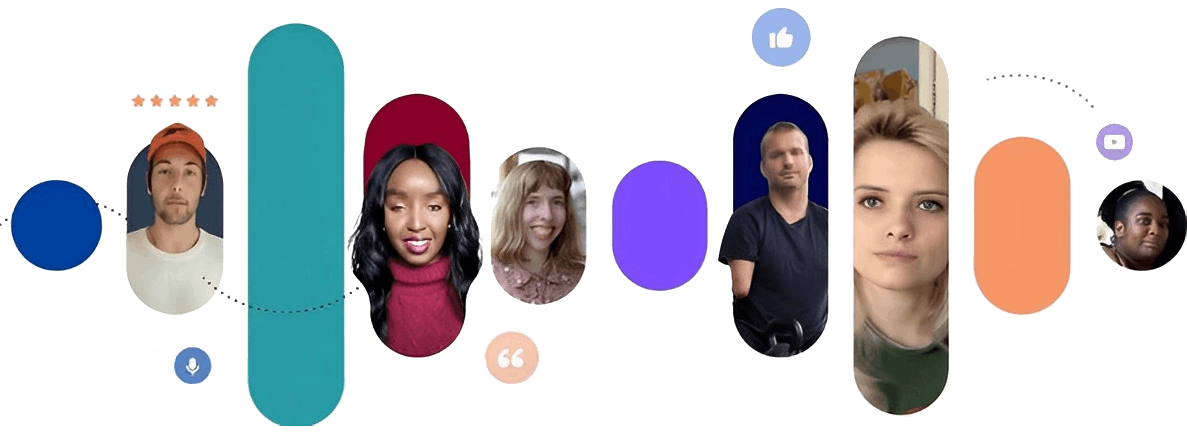- Marketing Services
- Case Studies
- Marketing Blog
- Client Reviews
- Contact us

The WCAG guidelines are a set of principles that help developers create websites that are easy to navigate and use for people with disabilities. WCAG is a key part of compliance with the ADA. Passed in 1990, the ADA ensures that people with disabilities have equal access to public spaces and services. This includes websites. If you want your website to be ADA-compliant, it needs to be WCAG-compliant, too—and vice versa.

In 2018, the DOJ specified that websites are public accommodations and should comply with ADA Title III. U.S. courts refer to WCAG 2.1 AA as the accessibility standard many organizations aim to meet.
This standard requires that all web content be:
Web accessibility is a complex issue, but it’s important to remember that the ADA applies to all disabilities. This means that website creators and businesses should be thinking about how they can make their websites accessible to people with visual, auditory, motor, cognitive, and other kinds of disabilities.
The internet is a tremendous resource that has significantly impacted our daily lives. We use it to find valuable information, communicate with friends and family, and even socialize with people worldwide. However, this powerful tool can be challenging to navigate for many users due to disability.
Web accessibility is essential for everyone who uses the internet—and it’s a legal requirement for companies that want to comply with the Americans with Disabilities Act (ADA). But how can you ensure that your website is accessible? With so many elements involved, it can feel like an overwhelming task.

Many nations have included online accessibility into existing human rights law that protects the rights of individuals with disabilities.
Of the population
has a disability
Of websites
are inaccessible
People with disabilities deserve equality
YoY increase
in legal actions

In 2018, U.S. Department of Justice clarified that websites are places of public accommodation and should comply with the ADA Title III. US courts refer to WCAG 2.1 AA as the accessibility standard.
There are many reasons to ensure that your website is WCAG 2.1 AA compliant. The most obvious reason is to avoid penalties from the Department of Justice. In addition, if your website is not compliant, it could be costing you business and losing customers looking for an accessible solution.
Inaccessible websites are not only unaccommodating to disabled users but can also put organizations at risk of lawsuits. Legal actions have a widespread effect across industries and are expected to increase as the need for accessible digital platforms becomes more apparent.

Legal actions have been filed by individuals, advocacy groups, and even governments against companies that failed to provide equal access to their services or products. These lawsuits often seek compensation for damages associated with accessibility problems, which can be costly to a company’s revenue and reputation.
At DCM, we understand that creating and maintaining a WCAG and ADA-compliant site means protecting yourself from liability and ensuring that the experience of interacting with your website is as seamless as possible for all web users, including those with disabilities.
By leveraging machine learning, we are revolutionizing how websites are made accessible. Our technology enables us to take a scalable approach to web accessibility in a business-friendly way, from auditing and testing to remediation.
The AI ADA Widget uses artificial intelligence (AI) to scan your site and report any potential issues with WCAG compliance, such as missing alt text or images that are not appropriately sized for screen readers. It then provides an easy-to-understand report that shows exactly what needs to be fixed so your site becomes fully accessible—you won’t have to worry about missing any crucial details. And if you’ve already experienced non-compliance complaints, DCM can verify before the authorities that you are taking action to fix the issue.
With our AI ADA Widget solution, you can rest assured that your company is doing everything possible to ensure its websites are WCAG 2.1 AA compliant and accessible for everyone.
Dot Com Media (DCM) has the solution you need to ensure your site complies with the Web Content Accessibility Guidelines (WCAG) and ADA regulations.
Our team of ADA compliance consultants will run a free compliance check on your site.
Step 1 – An ADA compliance specialist will be in touch to get some basic information about the website you’d like us to check.
Step 2 – Your ADA compliance specialist will run a scan of the website to identify compliance gaps and other accessibility barriers.
Step 3 – They’ll review the results with you, explain any issues, and offer tips and resources to help you improve accessibility and mitigate risk.
Contact DCM today to get started on the road to accessibility compliance and peace of mind.